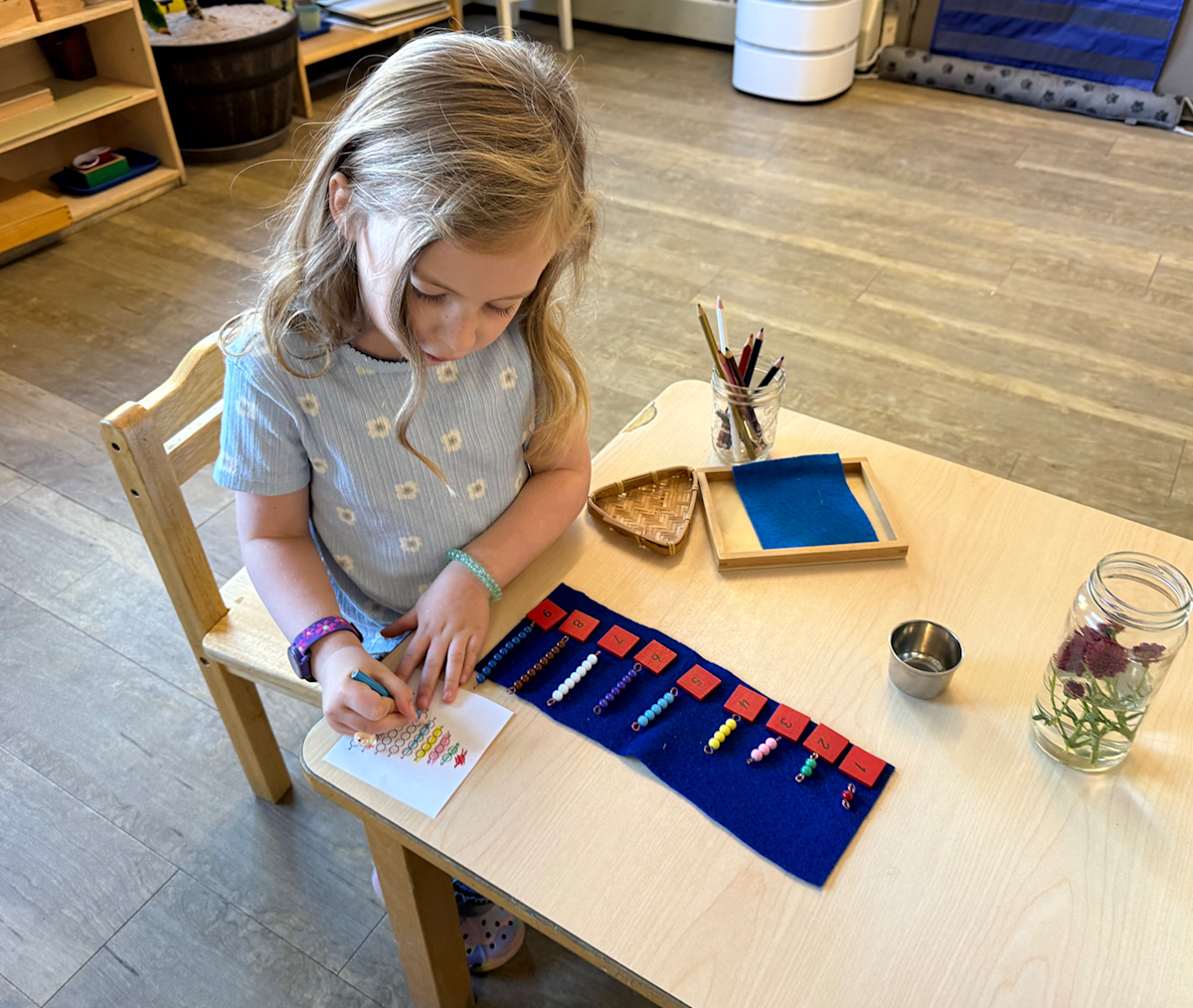Exploring real-life examples of overcoming struggles in primary math
Unveiling the Best Shortcuts for Addressing Math Issues Quickly
In the domain name of mathematics, performance is essential. Understanding shortcuts can change the way people come close to problems. From leveraging the distributive residential or commercial property to using quick reproduction methods, these approaches improve both speed and accuracy. In addition, acknowledging patterns simplifies complex estimations. As one checks out these approaches, they may reveal unexpected insights that can transform their mathematical experience. What are the most efficient techniques that can be quickly incorporated right into everyday technique?
Grasping Psychological Mathematics Techniques
Exactly how can one improve their computation rate without relying on calculators? Grasping mental mathematics methods uses a functional solution. By utilizing approaches such as damaging numbers into smaller sized, manageable components, people can streamline complicated calculations. For circumstances, when including two-digit numbers, rounding each number to the local 10 can make psychological addition simpler before adjusting back to the original values.
An additional reliable technique is to exercise reproduction tables extensively, making it possible for fast recall of products (struggles in primary math). Additionally, recognizing patterns in numbers can facilitate faster estimations, such as making use of the properties of even and odd numbers. Normal practice through challenges and games can additionally improve these skills, making psychological mathematics a lot more intuitive
Ultimately, cultivating self-confidence in one's arithmetic capacities permits quicker decision-making and enhances overall mathematical proficiency. By incorporating these methods, anybody can substantially boost their estimation speed.
Using the Distributive Residential Property
The Distributive Home is a fundamental idea in mathematics that simplifies calculations by permitting reproduction throughout addition or reduction. It is necessary for students to grasp its application through practical instances, which can improve their analytical skills. In addition, identifying typical mistakes can additionally solidify their understanding and avoid errors in future estimations.
Recognizing the Distributive Property
Understanding the distributive residential property can substantially streamline mathematical calculations. This basic home states that when increasing a solitary term by a sum or difference, one can distribute the reproduction across each term within the parentheses. For instance, in the expression a(b + c), one can rewrite it as abdominal + air conditioning. This approach not just enhances estimations yet likewise boosts understanding of just how numbers communicate (struggles in primary math). The distributive building is specifically helpful in algebra, where it assists in streamlining expressions and fixing formulas. In addition, it lays the foundation for more complex concepts, such as factoring and polynomial operations. By realizing the distributive home, pupils can develop a solid structure for taking on a variety of mathematical challenges effectively
Practical Instances Illustrated
Why is it essential to use the distributive residential property in sensible scenarios? The distributive residential or commercial property allows individuals to streamline complex computations, making analytical more reliable. For example, when computing the complete price of numerous items, one can utilize the expression 5(2 + 3) to locate the complete expense of five items priced at $2 and $3. By distributing, the computation becomes 5 × 2 + 5 × 3, producing a quicker result of $25. Another example is in algebra, where simplifying expressions like 3(x + 4) can be attained with circulation, resulting in 3x + 12. Such applications show the efficiency of this home in various real-world scenarios, boosting both rate and precision in mathematical analytical.
Common Errors to Avoid
Although the distributive home is a powerful tool in mathematics, usual errors can result in wrong results. One frequent mistake occurs when students forget to disperse the coefficient per term within parentheses. For instance, in the expression 3(x + 4), stopping working to apply the building properly can cause omitting the reproduction, producing an incorrect response. One more blunder includes defalcating the home by including as opposed to increasing, especially when negative indications are entailed. In addition, students might forget to simplify the last outcome, which can unknown errors made during circulation. Acknowledging and staying clear of these risks can enhance problem-solving effectiveness and precision when utilizing the distributive home in different mathematical contexts.
Quick Reproduction Shortcuts
In the domain of quick multiplication faster ways, strategies like multiplying by powers of 10 and the doubling and halving technique stick out. These approaches can substantially simplify calculations, making them a lot more easily accessible. Recognizing these shortcuts can enhance performance in mathematical analytical.
Increasing by Powers of 10
When increasing by powers of 10, the process comes to be incredibly straightforward, as the operation largely entails shifting the decimal point. Increasing a number by 10 requires relocating the decimal one place to the right, while increasing by 100 necessitates a shift of 2 places. This simpleness includes larger powers, where each additional absolutely no shows an additional decimal shift. Multiplying 5.6 by 1,000 outcomes in 5,600. This technique greatly enhances speed and precision, as people can promptly imagine the result without complicated calculations. Such effectiveness is specifically advantageous in mental math or when time is restricted, permitting quick analytic in different mathematical contexts. Grasping this strategy is important for anyone intending to enhance their math abilities.
Doubling and Halving Technique
The Doubling and Cutting in half Method provides a reliable strategy for fast multiplication, especially when handling also numbers. This method involves changing a reproduction trouble right into a simpler type by either doubling among the numbers and cutting in half the other. To compute 16 × 25, one can halve 16 to get 8 and dual 25 to get 50, resulting in 8 × 50, which equates to 400 (struggles in primary math). This approach streamlines computations, making them a lot more manageable. It is especially helpful in mental mathematics, allowing individuals to overcome issues swiftly and accurately. By leveraging this approach, specialists and trainees can boost their numerical agility, thereby boosting general efficiency in mathematical tasks

Efficient Department Strategies
Division often poses challenges for lots of learners, employing reliable techniques can considerably streamline the procedure. One reliable method is making use of suitable numbers, which entails rounding the divisor and reward to easier worths More about the author that are close to the original numbers. This approach makes psychological computations more workable. Another method is the estimate method, where learners can find a harsh answer before carrying out the exact department, giving a helpful standard for precision.
In addition, the long department technique stays a staple for separating larger numbers. By damaging the procedure right into smaller sized, extra absorbable steps, students can preserve clarity. The duplicated subtraction method can also be practical, particularly for those who deal with even more abstract ideas. By methodically deducting the divisor from the dividend, people can imagine the process. Generally, these approaches can enhance department skills, bring about quicker and a lot more accurate analytical capacities.
Quick Addition and Subtraction Techniques
Exactly how can learners boost their speed and precision on top of that and reduction? One reliable method is to use psychological math techniques, such as damaging numbers right into smaller, a lot more manageable parts. As an example, when adding 47 and 36, one can initially include 40 and 30 to obtain 70, then include the remaining 7 and 6 to come to 83. This strategy streamlines calculations and decreases errors.
An additional method entails using the number line for visual students, assisting them to see the connections in between numbers and boost their comprehension. Additionally, exercising with devices like flashcards can enhance fast content recall of basic sums and distinctions.
Students can benefit from familiarizing themselves with benchmark numbers, such as rounding to the local 10, which permits for quicker estimations. By incorporating these techniques right into their technique, learners can greatly boost their rate and accuracy in standard arithmetic procedures.
Leveraging Estimate for Quick Calculations
Evaluation functions as an effective device for improving calculation speed, complementing psychological math strategies effectively. By rounding numbers to their closest whole values, individuals can simplify complex estimations, making it much easier to reach an approximate outcome quickly. For instance, when confronted with a problem like 198 + 267, rounding to 200 + 270 returns a fast quote of 470, enabling the solver to assess the precision of the final answer.
Furthermore, evaluation is specifically helpful in scenarios entailing reproduction and department. By rounding factors to easier numbers, one can quickly determine approximate items or ratios. This strategy not just saves time but likewise assists in recognizing possible mistakes in calculations.
Recognizing Patterns and Solutions
Patterns and formulas are vital devices in mathematics that make it possible for individuals to resolve issues a lot more successfully. Identifying these patterns permits students to identify connections between numbers and concepts, which can simplify intricate computations. As an example, acknowledging the square formula (ax ^ 2 + bx + c = 0) assists in fast remedies to numerous formulas.
Moreover, patterns in turn, such as math or geometric developments, go right here aid people predict future terms without substantial calculations. Formulas, on the other hand, function as faster ways, permitting faster analytical by enveloping complicated relationships right into convenient expressions.
Frequently Asked Questions
Exactly How Can I Improve My Focus While Fixing Math Troubles Promptly?
To improve focus while fixing mathematics problems swiftly, one can remove disturbances, set details objectives, method mindfulness techniques, take regular breaks, and keep a regular research regimen to boost focus and psychological quality.
What Apps or devices Assist with Quick Math Problem-Solving?
Different devices and applications, such as Photomath, Microsoft Mathematics Solver, and Desmos, enhance quick math problem-solving. These sources supply detailed solutions, graphing capacities, and immediate feedback, making them important for professionals and pupils alike.
Are There Details Mathematics Shortcuts for Standardized Examinations?
Yes, particular mathematics faster ways for standard examinations include techniques like estimate, comprehending number homes, using the process of removal, and grasping common solutions. These strategies improve speed and accuracy, boosting total examination efficiency.

How Do I Practice Mathematics Shortcuts Efficiently?
To exercise math shortcuts properly, people should consistently resolve diverse troubles, make use of online resources, and participate in timed drills. Consistency and reflection on blunders improve understanding, ultimately bring about improved rate and accuracy in computations.
Can Shortcuts Be Applied to Complex Mathematics Troubles?
Shortcuts can undoubtedly be applied to intricate math troubles, although their effectiveness differs. Mastery of foundational ideas and critical reasoning makes it possible for people to streamline procedures, making it less complicated to tackle elaborate estimations effectively.
By using methods such as breaking numbers into smaller, manageable components, people can streamline complicated computations. Additionally, recognizing patterns in numbers can facilitate much faster computations, such as utilizing the residential properties of also and strange numbers. Evaluation offers as a powerful device for improving estimation speed, matching psychological mathematics approaches properly. By rounding numbers to their nearby whole values, people can streamline complicated computations, making it much easier to show up at an approximate outcome swiftly. Acknowledging these patterns allows students to determine relationships in between ideas and numbers, which can simplify intricate calculations.